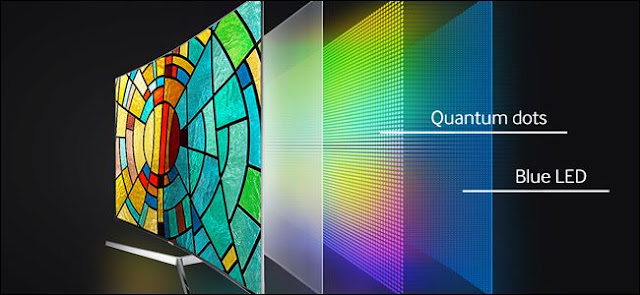Mixing Quantum Dots and OLEDs: iPhone Display "Black Technology"
Future Apple devices will combine the power of quantum dot LED enhancement with the responsiveness of OLED displays to provide optimal performance in terms of battery life and image quality.
It is reported that Apple has successfully applied for the patent of "Quantum dot LED (QLED) and OLED integrated in the display". This patent breaks down the components in a single pixel into several sub-pixels, combining the advantages of both technologies in one pixel group, thereby merging the two technologies into a hybrid display to some extent. This patent describes a quantum dot pixel display technology implemented on its display device that allows the display to exhibit more "pure" color and consume less power.
Of course, as a patented design, it is at least an invention, and it remains to be seen whether it can be used in actual products.
OLED evolved from LCD
Compared to LCDs, OLED displays have higher contrast and an excellent overall color display.
Conventional LCD screens are considered to be transparent and require backlighting to stimulate the liquid crystal to exhibit color. The light from the OLED screen is emitted on demand, which means that each individual pixel is its own light source, and each pixel can be set to achieve different brightness.
Therefore, compared with LCD displays, OLED technology has also greatly improved in terms of power efficiency. For example, black pixels do not consume any power, which opens up other uses for OLED screens, such as using only a small portion of the display for constant time and notification, with minimal impact on battery life.
All other factors are the same, because the backlight is not needed, the OLED display is thinner than other technologies. In theory, OLED display response time can reach 0.01 milliseconds, while modern liquid crystal (LCD) display response time is 1 millisecond.
However, the OLED display production process is also much more complicated than the LCD. In the initial production process, a single dust can destroy the entire display. Therefore, the cost of building a single OLED screen is also higher than that of an LCD screen.
Water impact is a major problem in OLED screens during production and use. Even if a small amount of water hits the organic substrate of the screen, the display may be damaged immediately and need to be replaced.
QD shows the development trend in the future
The quantum dots implemented by Apple seem to be a true quantum dot (QD), unlike current commercial displays. Like OLEDs, light is emitted on demand in real QDs, and complete technology will become an alternative display technology for OLEDs at some point in the future.
Quantum dot QLED TVs have emerged that are being used to improve backlighting and are not used at the pixel level.
True QD replaces photoluminescent quantum dots behind organic components in conventional LED or OLED screens for self-luminous electroluminescent nanoparticles.
Compared to OLED technology, the advantages of this technology include longer life, more saturated colors, thinner display, and a more streamlined manufacturing process after the technology is perfected. In addition, true QD displays can produce displays up to 1000 pixels per inch.
The response time of a QD display is closer to that of an LED, so a hybrid display will use OLED speed.
When does the hybrid display appear?
Although QLED TVs with quantum dot backlights are available, real QD displays are currently only available in the lab. Apple certainly saw this trend and has already started related development.
Apple's patent application discusses the challenges of developing hybrid displays, as well as production and practical use. This application is not clear about the actual use of the display produced, but briefly describes the fact that the production of hybrid displays is complex and not fully resolved.
It is unclear whether Apple's hybrid display technology will be born before or after the QD display. It seems that Apple is using the app for future gambling.
To Sum Up
Relative to OLED technology, the relative thickness of TV QLED technology is not suitable for small screens, and most users need a thinner smartphone display. The true QD is indeed thinner than the QLED, and the OLED is the same, and the fusion of these two technologies will complement each other perfectly.
Now our company already upgrade technology by using QD-ESR backlight which can have higher brightness, wider color space, if you wanna customized High-End iPhone LCD, welcome to contact us.
(iPhone 7 CD value can be 700, K value can be 7200)
We are ONE-STOP Premium Quality iPhone Tianma LCD and phone parts supplier in Shenzhen since 2011.
For more details welcome to contact us by Whatsapp/Wechat:+86-18813643652; Skype:live:ymjtina; Email:Tina@cinoparts.com; Website:www.cinoparts.com







评论
发表评论